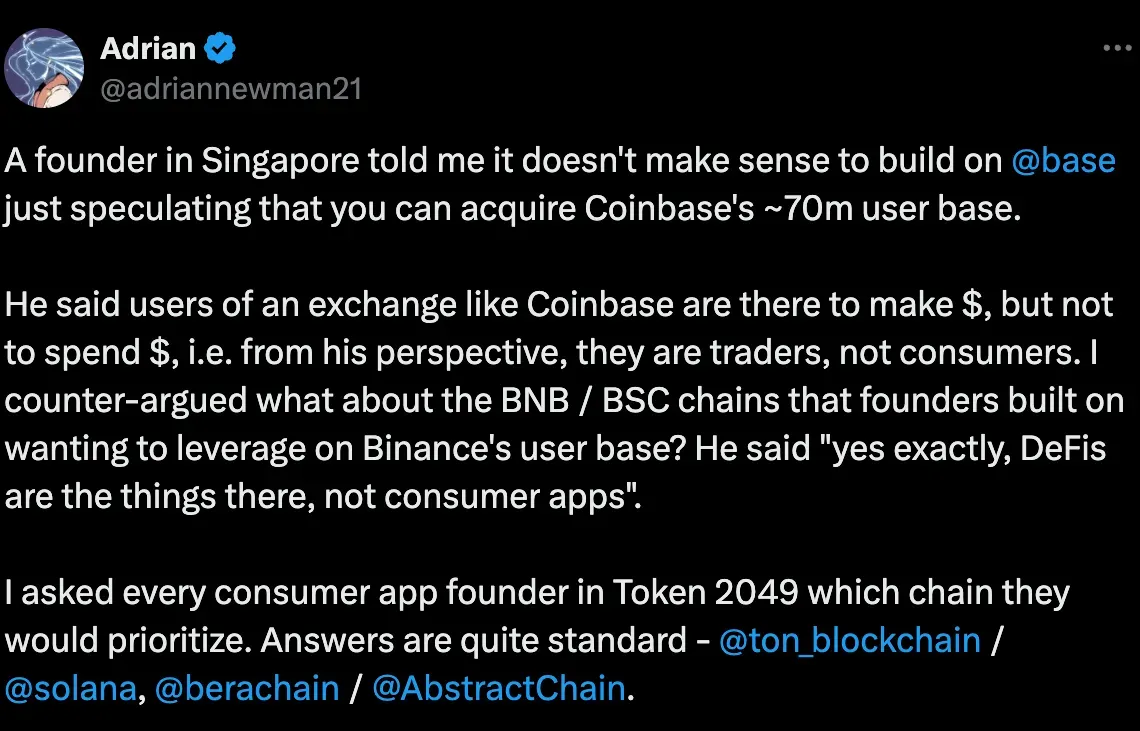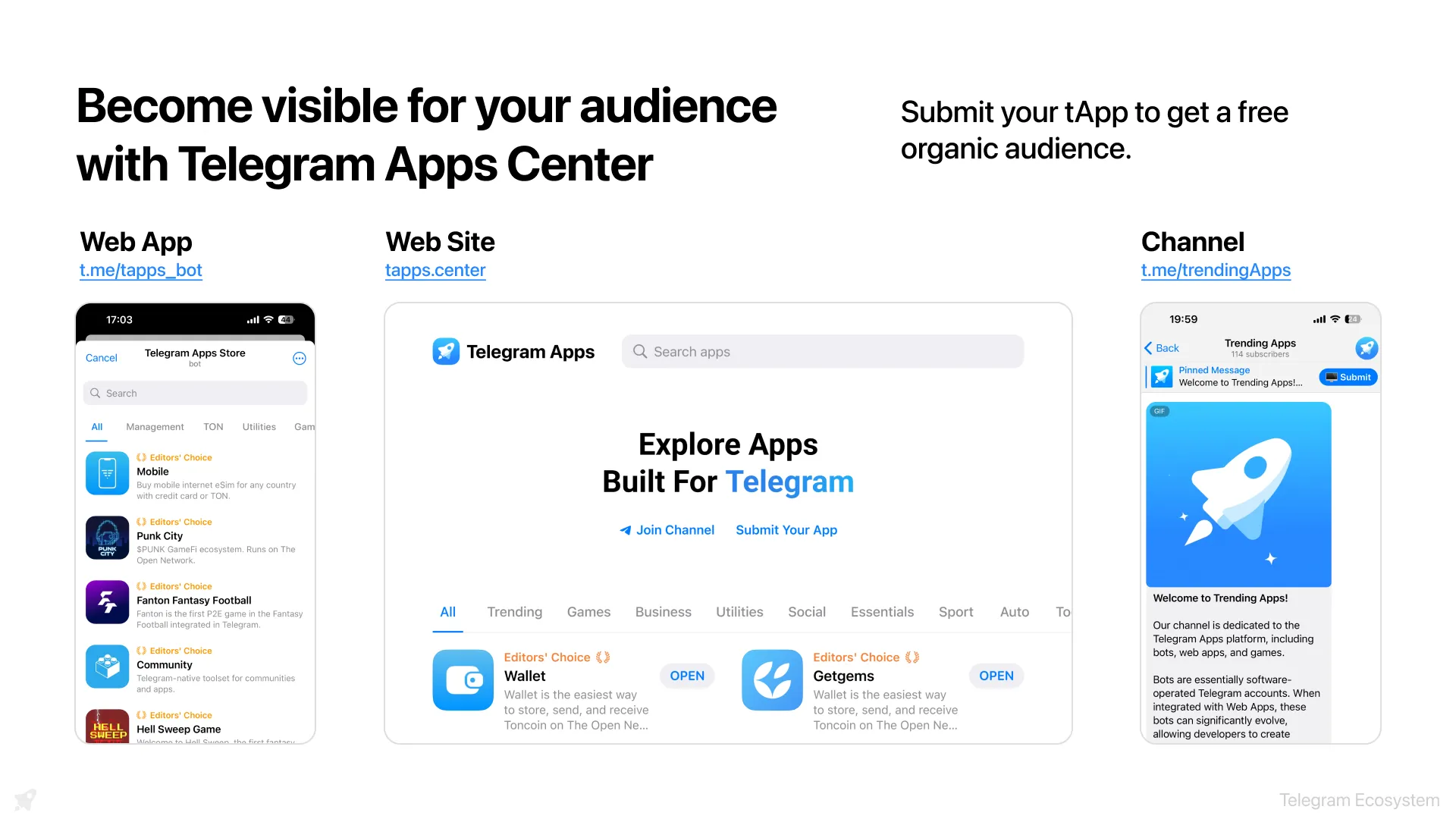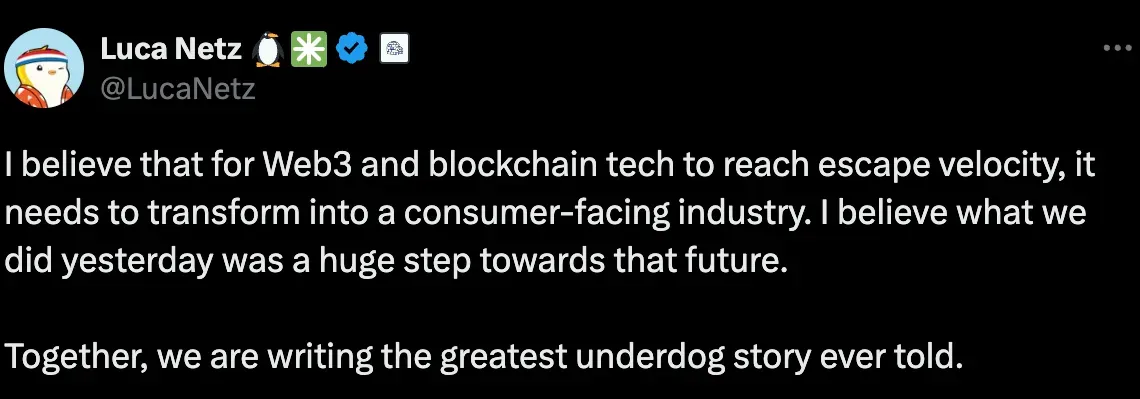As more consumer-focused apps proliferate, we often forget to ask: How do users find these new apps? In traditional environment, we have well-established places like Apple's App Store or Steam to discover apps. But in crypto, especially for consumer apps, there's no clear place for users to navigate and find interesting services.
Most crypto users rely on a mix of social groups or platforms to find new apps. They might check Twitter, join Telegram groups, or overhear from their network. This process of discovering new services may require time and effort, but it's worked well enough for the crypto community so far. In fact, discovering new services has become something of a fundamental game for crypto users. This is mainly because crypto often highly rewards early users and contributors.

Source: THE NEMESIS GUIDE TO BEING EARLY
Crypto has turned "being early" from just a trend into a way to potentially make financial gain. This idea of "Being early as a service" has stayed around through different crypto cycles, changing from the ICO craze of 2017 to airdrop meta and memecoin supercycle. Early users who find promising new projects often get exceptional rewards, considering the risks they take with their time and money.
This creates a strong motivation for market participants to constantly search for the next big opportunity, hoping for huge returns. However, this high-risk, high-reward approach requires significant time and effort, and it's not suitable for everyone. This is especially true now, as the crypto industry is aiming to develop applications that appeal to a broader audience beyond just seasoned crypto enthusiasts.
So, how can newcomers to crypto find apps that interest them? Most platforms such as DeFiLlama or Dune focus on financial metrics such as TVL, trading volume, and fund flows. Although these figures are valuable for experienced crypto traders, they may not be as meaningful to those seeking more discretionary applications like social platforms, games, or NFTs.
Moreover, onchain ecosystem lacks the curated content and recommendations. Conventional discovery channel such as App Store provide personalized suggestions, editor's picks, and recommendations to guide users. Onchain ecosystem, however, lacks these discovery tools. Even well-established ecosystems like Ethereum or Solana don't offer a proper venue for navigation and exploration. As a result, users must heavily rely on their social networks, both online and offline, to uncover new services.
The lack of structured app discovery channels is a significant challenge for both users and developers across blockchain ecosystems. As blockchains become less distinguishable in terms of performance and economic design, they are becoming more like integration library and community hubs for the applications built on them. Consequently, app developers are placing greater emphasis on choosing platforms based on cultural resonance and ability for distribution. What these builders truly seek from the underlying network is effective distribution – an effective method to connect their applications with engaging users.

Source: X(@adriannewman21)
Solving the discovery problem for consumer crypto services is crucial for wider adoption. The chain, or platform that cracks this puzzle would gain a competitive edge compared to its contenders. There seems to be two ways to build effective discovery and distribution for consumer apps: 1) a product-based approach and 2) a community-based approach.
The product-based approach capitalizes on existing platforms with large user bases to expand into the onchain ecosystem. Several major centralized exchanges (CEXs) such as Binance, Coinbase, and OKX have employed this strategy, leveraging their substantial user bases and financial resources. While some have become significant players in the crypto landscape, the approach taken by Telegram and TON stands out as particularly effective.
TON, the network developed by Telegram, has achieved remarkable success in deployment and discovery of applications. In 2023, TON launched its own application library called App Center, focusing on games and mini apps as part of its growth strategy. This quickly became the primary destination for users to discover apps within the ecosystem. The initiative led to a series of highly successful projects such as Notcoin, Hamster Kombat, and Catizen, resulting in the onboarding of numerous applications to the TON network.

Source: TON Ecosystem Evolved: Introducing Telegram Apps Center
Telegram's App Center provides an intuitive experience for both crypto-native users and beginners by closely replicating the user experience of a typical app store. TON's App Center currently hosts over 1,300 apps across more than 20 categories, allowing users to easily explore popular, most-used and new services all in one place. The familiar user experience within Telegram effectively lowers entry barriers and increases engagement from users who are not familiar with crypto.
What distinguishes Telegram's App Center is its superior content curation. Rankings based solely on user metrics can be volatile and prone to manipulation, making it challenging to accurately assess a service's true value. Many crypto platforms that list or rank services often lack qualitative evaluation criteria. TON addresses this issue by incorporating features like editor recommendations, similar to traditional app stores. Additionally, TON operates its own Trending App Center channel, where users can discover high-quality services without the need to navigate multiple platforms or communities. This streamlined approach provides users with a curated selection of apps, offering a reliable starting point for exploration within the ecosystem.
TON has maintained its impressive trajectory, excelling in both application development and user acquisition. The success of TON's strategy offers valuable insights for other consumer-oriented crypto ecosystems. Despite having a user base, technical infrastructure, and community that differ significantly from the traditional crypto landscape, TON has managed to attract an unprecedented influx of users. TON's success demonstrates that bridging the gap between conventional and crypto users through familiar interfaces and seamless integration can lead to rapid growth of the ecosystem.
Across all fields, recommendations from peers and active user groups serve as the most important gauge of a product or service's quality. In the crypto ecosystem, the role of passionate community members goes beyond that of mere users; they become fervent supporters and ambassadors of the brand. Their genuine interest and word-of-mouth promotion are key drivers in raising awareness of projects and attracting new users.

Source: X(@LucaNetz)
Abstract stands out as a prime example of successful community-based approach. Abstract strategically leverages the power of community to build a strong positive feedback loop between apps and users. While Abstract does possess functional elements to enhance user experience, their true competitive edge lies in their unparalleled distribution capability. In a recent interview, Abstract co-founder Luca Netz emphasized that even the best product is meaningless if it doesn't reach users. After all, the first step in user acquisition is awareness.
The strength of Abstract and its origin, Pudgy Penguin, lies in their brand power that transcends both Web3 and Web2 users. Pudgy Penguins, which was boldly acquired when the crypto market was going through a downturn, has since achieved remarkable success. Through partnerships with major retailers like Walmart and explosive popularity on Instagram and TikTok, Pudgy has exerted powerful influence not only within the crypto community but also among the general public.

Source: Pudgy Penguin Instagram
With Pudgy GIFs garnering over 30 billion views and an Instagram following exceeding 1.5 million, the influence of the Pudgy Penguin brand far surpasses the scale of the entire crypto user group. Moreover, by utilizing characters that appeal to all types of user groups, they've established themselves as a mascot representing Web3 from the general public to institutional investors.
While Abstract is still preparing for its mainnet launch, their unique distribution capabilities are already recognized by many builders and are expected to provide a strong competitive advantage compared to other ecosystems. Abstract and Pudgy have demonstrated their ability to consistently create viral content within social media platforms and have built skills in fostering vibrant communities. This could translate into an effective funnel for driving traffic to applications within the Abstract ecosystem.
It's worth noting that both TON and Abstract, possess influence that extends beyond existing crypto users to reach Web2 users. Considering that the overall consumer crypto market isn’t yet suffucuent, their accessibility to Web2 users holds even more significant meaning.
As we move forward, the success of crypto ecosystems and applications will increasingly depend on their ability to attract and retain users who are new to the crypto space. The platforms that can effectively lower entry barriers and provide intuitive experiences for crypto novices are likely to emerge as leaders in the next wave of adoption.

Source: X(@saucegg_)
Sauce GG is a memecoin trading platform with unique user experiences integrating meme content curation with trading functionality. This not only enhances user engagement but also serves as a form of on-platform due diligence, particularly tailored for memecoins. Sauce GG offers users a seamless trading experience across multiple blockchains including Solana, Ethereum, and Base. Sauce GG recently won 2nd Prize of Monad Madness event held in New York
Despite the often perceived frivolity of memecoin trading, Sauce GG demonstrates a commitment to advanced trading features and robust security measures. The platform incorporates MEV protection and prioritizes the security of user assets. Utilizing a non-custodial wallet system, Sauce GG empowers users with sovereignty over their funds while implementing Turnkey's Secure Enclave, a trusted execution environment (TEE), for enhanced security. Web users benefit from a 15-minute API authentication window using Passkeys, while mobile users enjoy the added security of device-specific features such as biometric authentication through the device's keychain.

Source: Multiplier Docs
Multiplier is a platform that offers a unique user experience in its attempt to gamify the volatility and speculative nature of the memecoin trading. Multiplier provides users with the ability to bet on various tokens, especially memecoins or low market cap tokens, with high multipliers. Multiplier is currently preparing for its official launch and is expected to be available on the Abstract in the near future. The gameplay is simple. Users select the coin they want to bet on, set the bet amount and multiplier. Then, they roll the dice and receive tokens corresponding to the multiplier of their bet amount based on the randomly obtained result. To ensure fairness, Multiplier has implemented a verifiable random number generator in determining betting results, enhancing the platform's reliability and transparency. Additionally, the platform is designed so that users always receive payouts in some form - either in the chosen token or in the platform's native token, MINT. MINT can be used as betting currency within the platform or as rewards for content creation and community participation.